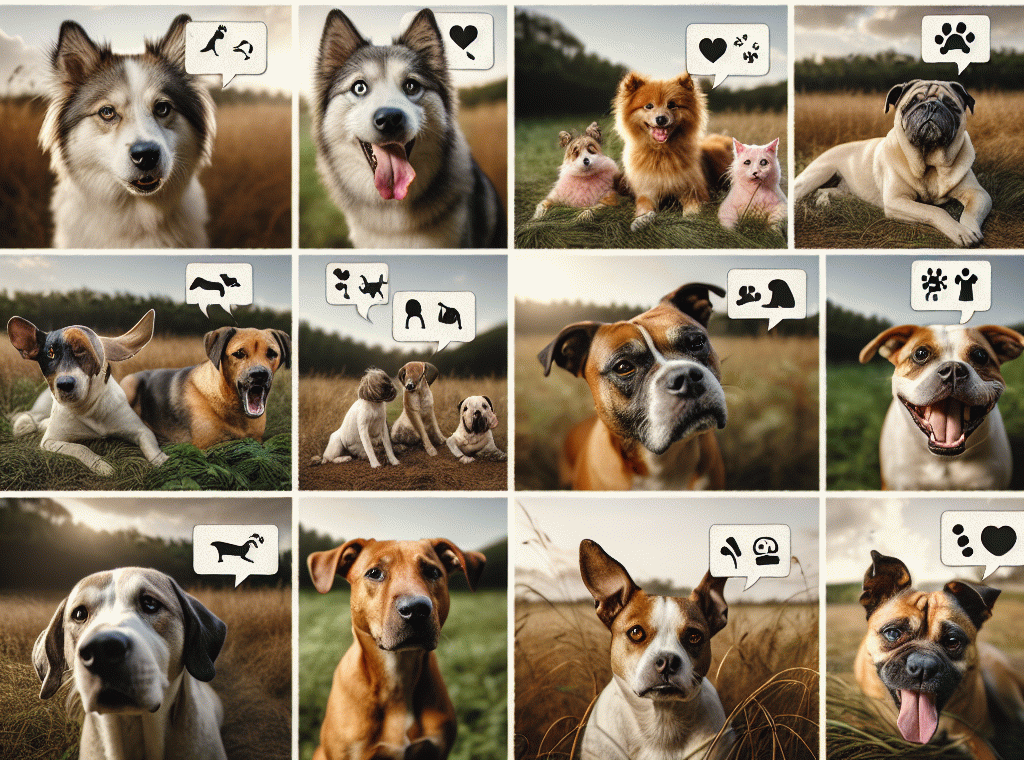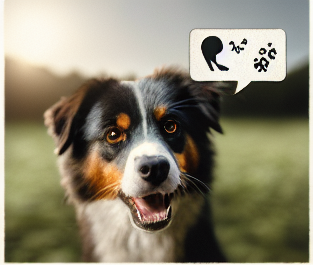
The Language of Dogs
Understanding Dog Behaviour and Body Language
As dog owners, it's crucial to understand our furry friends' behaviour and body language. Dogs communicate with us and with each other through a complex system of signals, and being able to interpret these cues can help us better understand their needs, emotions, and intentions. Here are some key aspects to consider when it comes to understanding dog behaviour and body language:
Tail Wagging:
While tail wagging is often associated with happiness, it's important to remember that it's not always a sign of friendliness. A slow, low wag can indicate uncertainty or fear, while a fast, high wag usually signifies excitement or happiness.
 Ears:
Ears:
Dogs' ears can tell a lot about their emotional state. When relaxed, their ears are usually in a natural position. However, if their ears are pulled back or flattened against their head, it may indicate fear or anxiety. Erect ears can signify alertness or aggression.
Body Posture:
Pay attention to your dog's overall body posture. A relaxed and loose body indicates that they're comfortable and at ease. On the other hand, a stiff body, raised hackles or a lowered head may indicate fear, aggression or stress.
Eye Contact:
Eye contact is an essential part of dog communication. Direct, relaxed eye contact usually suggests confidence and trust. However, prolonged or intense staring can be seen as a challenge or a sign of aggression. In some cases, avoiding eye contact may indicate fear or submission.
Vocalisations:
Barking, growling, and howling are all forms of vocal communication in dogs. While barking can signify different things, such as alerting, playfulness, or fear, growling is often a warning sign of aggression or discomfort. Howling can indicate loneliness or the desire to communicate with other dogs.
Body Movements:
Pay attention to how your dog moves. Playful behaviour often involves bouncing, bowing, and a wagging tail. Slow, deliberate movements can indicate caution or anxiety. Additionally, sudden freezing or cowering may suggest fear or submission.
Facial Expressions:
Dogs can convey a wide range of emotions through their facial expressions. A relaxed face with an open mouth and soft eyes usually indicates contentment. However, wrinkled brows, bared teeth, or a tense mouth can signal fear, aggression, or discomfort.
Context and Overall Behaviour:
It's crucial to consider the context and the overall behaviour of your dog. Understanding the situation in which certain behaviours occur can provide valuable insights into their motivations. Additionally, observing patterns of behaviour over time can help you better understand your dog's individual temperament and needs.
By familiarising yourself with these aspects of dog behaviour and body language, you'll be better equipped to understand and communicate with your furry friend. Remember that every dog is unique, and their behaviour may vary based on their personality, breed, and past experiences. If you have concerns about your dog's behaviour or need guidance, consult with a professional dog trainer or behaviourist who can provide tailored advice for your specific situation.
At Pawsies, we prioritise the well-being and happiness of every dog in our care.
Understanding and interpreting dog behaviour is an integral part of our approach, allowing us to provide a safe and enriching environment for our furry guests.
contact us or read Boomer's Blog



